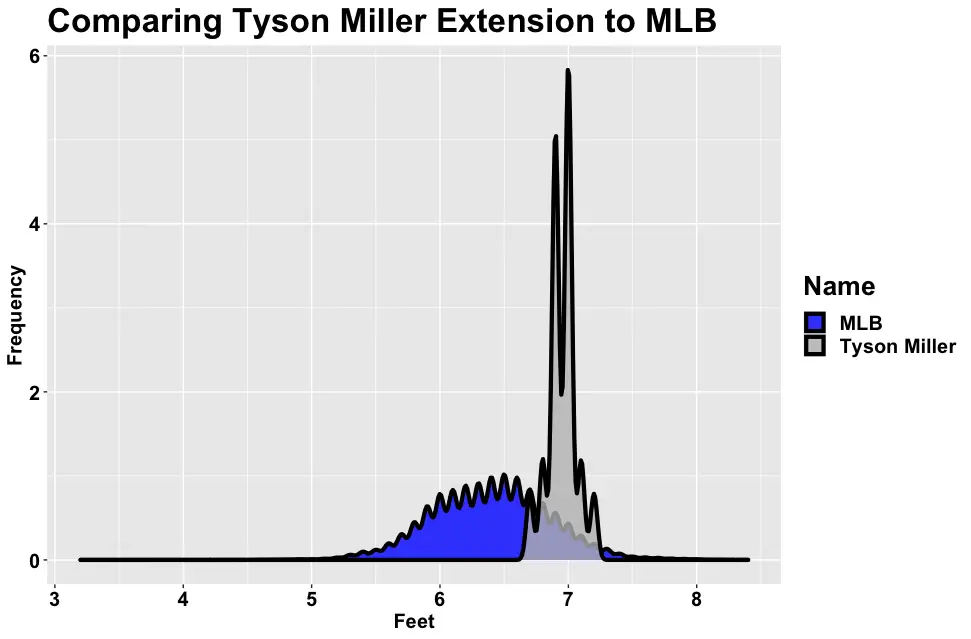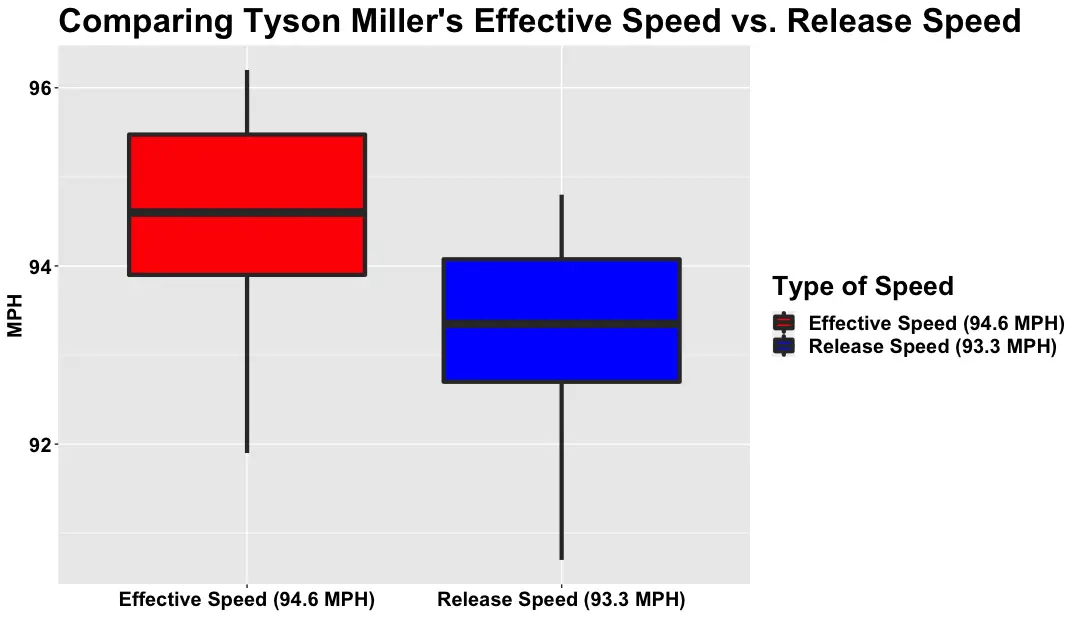
Tyson Miller Produced Eye-Popping Statcast Data in Limited Action
If you’re a fan of advanced data and you’re looking for a Cubs prospect to follow this spring, keep an eye out for Tyson Miller once spring games start. Just be careful, though, because the 25-year-old righty has produced the kind of Statcast results that might pop those eyes right out of your head. We’re only talking 38 pitches, but this stuff is something for stat nerds to behold.
The first really intriguing feature is that Miller’s vertical and horizontal release points are above the 95th percentile for all fastballs thrown by right-handers in 2020 (~67,000 pitches). You can see both metrics illustrated in the below distribution graphs (no, these are not COVID curves). The first shows Miller’s vertical release point (gray) overlapping the bottom 5% of all fastballs thrown in MLB (blue) while the second sees his horizontal release point overlapping 2% of MLB fastballs.
Damn.


The second eye-popping feature is Miller’s release extension. He’s 6-foot-4, so not exceedingly tall, but he lets go of pitches closer to home plate than about 90% of all pitches thrown in MLB.

Cubs prospect guru Bryan Smith of Bleacher Nation — who is one of the best and friendliest Cubs Twitter follows — mentioned Miller’s fastball location and extension in an excellent write-up that you should read as a companion piece to this. Before we get into any additional data, let’s see what his fastball actually looks like. In the chosen video, you’ll notice how Miller pinpoints his exact spot on the lower, outside portion of the zone.
The answer here is Tyson Miller, and you can kinda see it in this vid. The long extension makes perceived velo higher than actual. The low release height flattens his Vertical Approach Angle. Both will help play up his high FB, which has indeed always been a good pitch for him. https://t.co/vbk32AD5yq
— Cubs Prospects – Bryan Smith (@cubprospects) January 3, 2021
As a result of that extension decreasing the distance from release to home plate, Miller’s fastball actually appears faster to batters. The difference between effective speed — what the batter perceives — and release speed is almost 1.5 mph. For the sake of comparison, Yu Darvish‘s effective speed versus his release speed was essentially identical in 2020.


So the combination of his extreme release point and extension makes Miller a more deceptive pitcher and gives him an advantage very few pitchers can match. It’ll still take some work with the Cubs’ pitching coaches to further dial in his approach, but Miller could be a part of the starting rotation for years to come.

